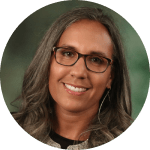Too important to be left to men
 Women have been at the forefront of computer science and electronic engineering from the outset. At the moment too many girls have been believing the stereotypes, which just leads to a self-fulfilling prophecy. Fortunately many ignore them and are continuing to be as successful as the women of history.
Women have been at the forefront of computer science and electronic engineering from the outset. At the moment too many girls have been believing the stereotypes, which just leads to a self-fulfilling prophecy. Fortunately many ignore them and are continuing to be as successful as the women of history.
Here are links to our resources that celebrate some of the great women of the past and present, highlighting the work of top researchers over the decades and also profile some students who are set to continue the trend. Women may not always shout about their achievements, but boy do they do it well!
As leading computer scientist Karen Spärk-Jones said: “Computing’s too important to be left to men”.
CS4FN Slide Deck Women
- Female Computing Stars through the decades [pptx VERY LARGE]
- Female Computing Stars through the decades [pdf for easy printing]
CS4FN Magazines on Women
Posters
- A Gendered TimeLine of Computer Science Stars
- Also use the slide deck above as posters
- Posters celebrating diversity in computing
- Includes links to short summaries about the women in the posters and some classroom suggestions
CS4FN Articles
Short Stories
Some of the People …
GLADYS WEST: SATELLITE POSITIONING
 Gladys West’s work on accurate positions of satellites underpins satnav and other location-aware services we rely on. She also worked on the first sea observation satellite, vital in understanding climate change.
Gladys West’s work on accurate positions of satellites underpins satnav and other location-aware services we rely on. She also worked on the first sea observation satellite, vital in understanding climate change.
KATHLEEN BOOTH
In the 1950s Kathleen Booth was part of a team (including Xenia Sweeting and Kathleen’s future husband, Andrew Booth) at Birkbeck College that designed an early computer called the Automatic Relay Calculator (ARC). It was the first example of a stored-program computer to actually work. The biggest selling computer in the UK in the 1950s was based on the team’s follow-on design. Kathleen’s focus was initially on the programming and as a result she went on to developed an early assembly language. However, she was also involved in building and testing the group’s machines. She went on to do research in neural networks, which now form the basis Machine Learning. In the late 1950s she, for example, created programs that could recognise patterns in the same ways that animals do.
KATHERINE JOHNSON, MARY JACKSON AND DOROTHY VAUGHAN: SPACE-AGE COMPUTATIONS
NASAs ‘hidden figures’ worked on calculations like the trajectories of spacecraft and their launch windows. They helped kick off the space age. Their pioneering lives have been made into a film.
LISA GELOBTER: MULTIMEDIA VIA THE WEB
Can you imagine not having videos and games embedded in web pages? How boring would it be with just text, text and more text? Lisa Gelobter led the team that developed the software that allows the inclusion of those more interesting bits.
SAFIYA NOBLE: BIAS IN SEARCH ENGINES

Sociologist Safiya Noble’s research on ethics in technology has drawn attention to race and gender in algorithms. Her book “Algorithms of Oppression: How Search Engines Reinforce Racism” looks at how a bias against people of colour can be (even unintentionally) incorporated in search engine algorithms.
KIMBERLY BRYANT: BLACK GIRLS CODE
Kimberly Bryant’s personal experience of being a black female electronics engineer led her to found Black Girls Code. Focusing on gender and race as overlapping social identities the educational group teaches 6-17 year-old girls from underrepresented communities skills in computer programming and technology.
Find out more
ANNE-MARIE IMAFIDON: STEMETTES
Anne-Marie Imafidon, aged only 11 was the youngest girl to pass an A level in Computing and was only 20 when she passed a Master’s degree in Maths & Computer Science. With such a passion for STEM she co-founded STEMettes a programme to inspire young women in Science, Technology, Engineering and Maths!
EVELYN BOYD GRANVILLE: SPACE SOFTWARE
Early space travel required software with some very complicated mathematics. Evelyn Boyd Granville was the right mathematician for the job. She became a computer programmer working on space mission projects. Celestial mechanics, trajectory and orbit computations all needed her maths skills.
